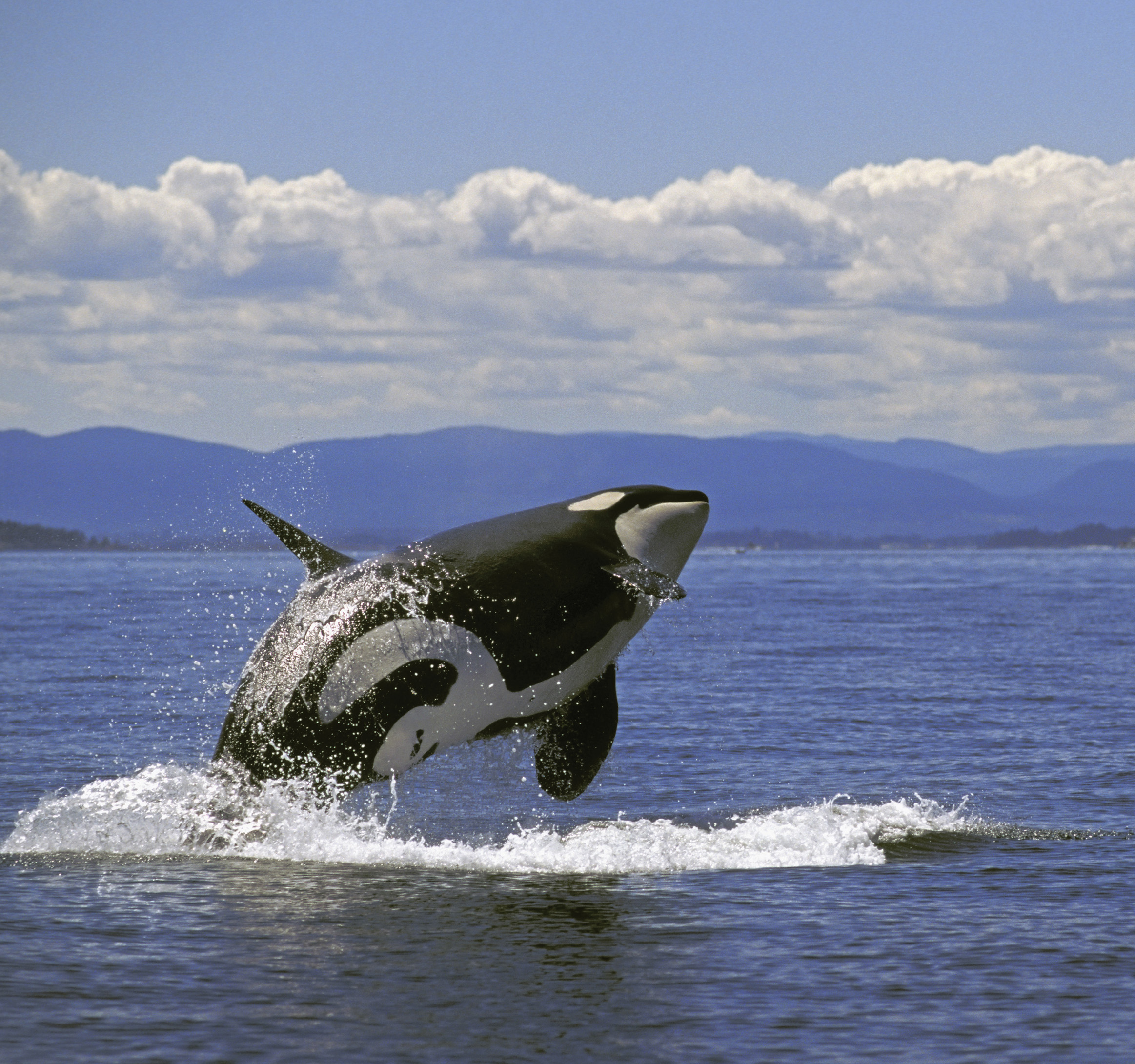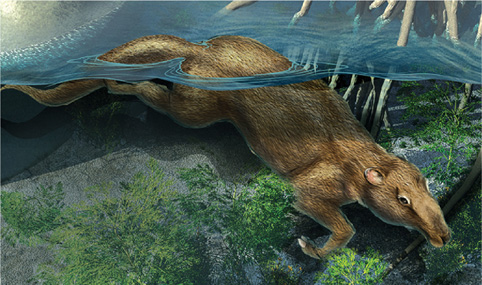Chapter 2
Adaptations to Aquatic Environments
32

33
CHAPTER CONCEPTS
- Water has many properties favorable to life.
- Aquatic environments challenge the balance of water and salt in animals.
- The uptake of gases from water is limited by diffusion.
- Temperature limits the occurrence of aquatic life.
The Evolution of Whales
Life on Earth began in the water. Of the many species that live in water, some of the most charismatic are the whales—a group that is particularly well suited to aquatic life. Surprisingly, the ancestor of modern whales can be traced back to a terrestrial mammal related to cattle, pigs, and hippos. Scientists first proposed an evolutionary relationship between whales and this group of land mammals in 1883, based on observations of similarities in their skeletons. In the 1990s, DNA technology revealed that the groups are related genetically. In 2007, scientists discovered a critical link between hippos and whales: the fossilized bones of a previously unknown large terrestrial mammal that may have spent at least some of its time in the water. Scientists speculate that over the subsequent 50 million to 60 million years, selection imposed by the aquatic environment led to the evolution of the whale as we know it today.
“Surprisingly, the ancestor of modern whales can be traced back to a terrestrial mammal related to cattle, pigs, and hippos.”
Modern whales have evolved a wide range of adaptations for aquatic life. One of the most obvious challenges is the ability to swim efficiently. For example, the killer whale is capable of swimming up to 48 km per hour. Such speeds are possible only with a highly streamlined body. Over evolutionary time, natural selection would have favored any individuals that had a more streamlined body, including bodies with reduced hindlimbs. In modern whales, tiny remnants of the hindlimb bones can be found entirely within the whale’s body. During the course of the whale’s evolutionary history, whale ears became internalized. Whether this was due to selection for a streamlined body or for some other reason is not known, but the outcome made for a more streamlined body.

Obtaining oxygen is another challenge for whales because they need to dive for long periods in search of food. Over time, there was an evolutionary change in the location of the nostrils from the front of the head to the top. While scientists cannot be certain of the selective forces that caused this change, one hypothesis is that changes in nostril position may have been favored over time to the point that the modern whale can more easily grab a breath of air when surfacing. In addition, whales can hold their breath for long periods. Sperm whales, for example, dive to depths of 500 m and may stay below the surface for more than an hour as they search for fish, squid, and other food. During a dive, the sperm whale relies on oxygen stored in its body. It might surprise you to learn that very little of this oxygen resides in the lungs; most is bound to hemoglobin in the blood or to a similar oxygen storage molecule, myoglobin, in the muscles. Under water, whales slow their metabolism by reducing blood flow to nonvital organs such as the skin, viscera, lungs, and kidneys, while blood flow to the brain and heart continues. Consequently, during a dive the temperature of all but a few key organs drops, the heart rate slows, and demand for oxygen is reduced.
34
Regulating body temperature is yet another challenge. Because heat loss occurs much faster in water than in air, a thick layer of fat under the skin insulates most oceanic mammals living in cold waters. Like a warm coat, this insulation slows the loss of heat generated by its internal organs. Whales also maintain a higher metabolic rate than land mammals of similar size, and this helps generate extra heat. The whale’s vascular structure also helps maintain heat; the veins and arteries of a whale’s flippers and tail are next to each other. This allows the warm arterial blood that travels away from the heart to transfer heat to cooler blood in adjacent veins as it returns from a whale’s extremities to the heart.
The evolution of the whale took place over a period of 50 million years. The selective forces occurring over this time cannot be known with certainty, but the fossils found to date suggest that an ancient terrestrial mammal slowly evolved a number of adaptations that gave rise to modern-day whales. In this chapter, we examine the challenges posed by living in an aquatic environment: the properties of water; the need to balance salt and water concentrations; the movement of gases, including carbon dioxide and oxygen; and the wide range of temperatures that can exist. We will see how organisms have evolved adaptations that meet these challenges and allow species to persist in the aquatic world.
SOURCES: Valley of the Whales, National Geographic Magazine (2010), http://ngm.nationalgeographic.com/2010/08/whale-evolution/mueller-text/8.
Whales descended from tiny deer-like ancestors, ScienceDaily (2007), http://www.sciencedaily.com/releases/2007/12/071220220241.htm).
 Scientists generally agree that life began in the ocean and that the first forms of life were simple bacteria. Over millions of years, these bacteria gave rise to an incredible diversity of organisms, many of which still live in the water. Other species, as we saw in the case of the whale, evolved terrestrial forms that later evolved to return to life in the ocean. In this chapter, we begin an exploration of ecology at the individual level by examining the ways in which the properties of water support and constrain aquatic organisms and direct the evolution of adaptations.
Scientists generally agree that life began in the ocean and that the first forms of life were simple bacteria. Over millions of years, these bacteria gave rise to an incredible diversity of organisms, many of which still live in the water. Other species, as we saw in the case of the whale, evolved terrestrial forms that later evolved to return to life in the ocean. In this chapter, we begin an exploration of ecology at the individual level by examining the ways in which the properties of water support and constrain aquatic organisms and direct the evolution of adaptations.